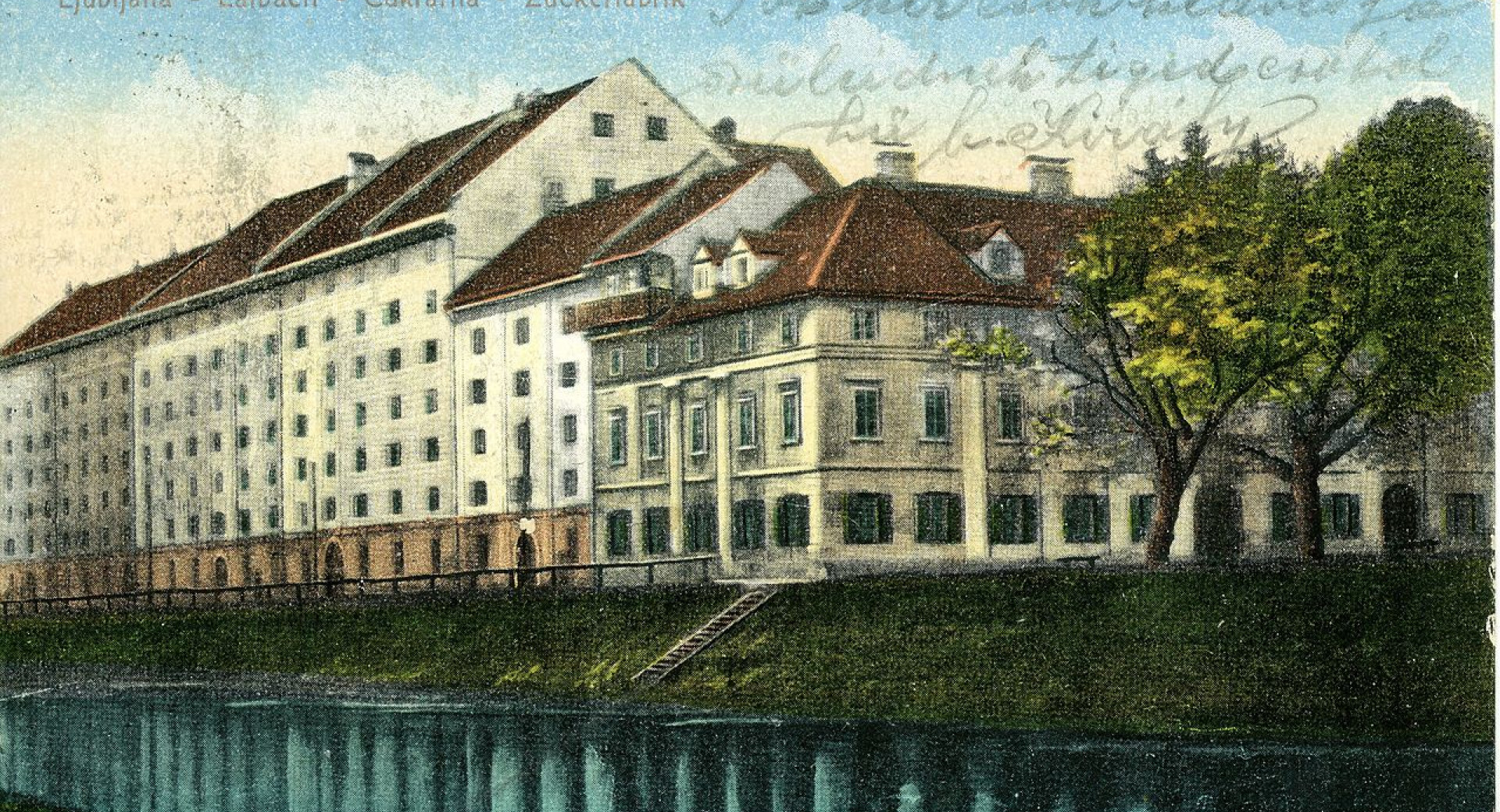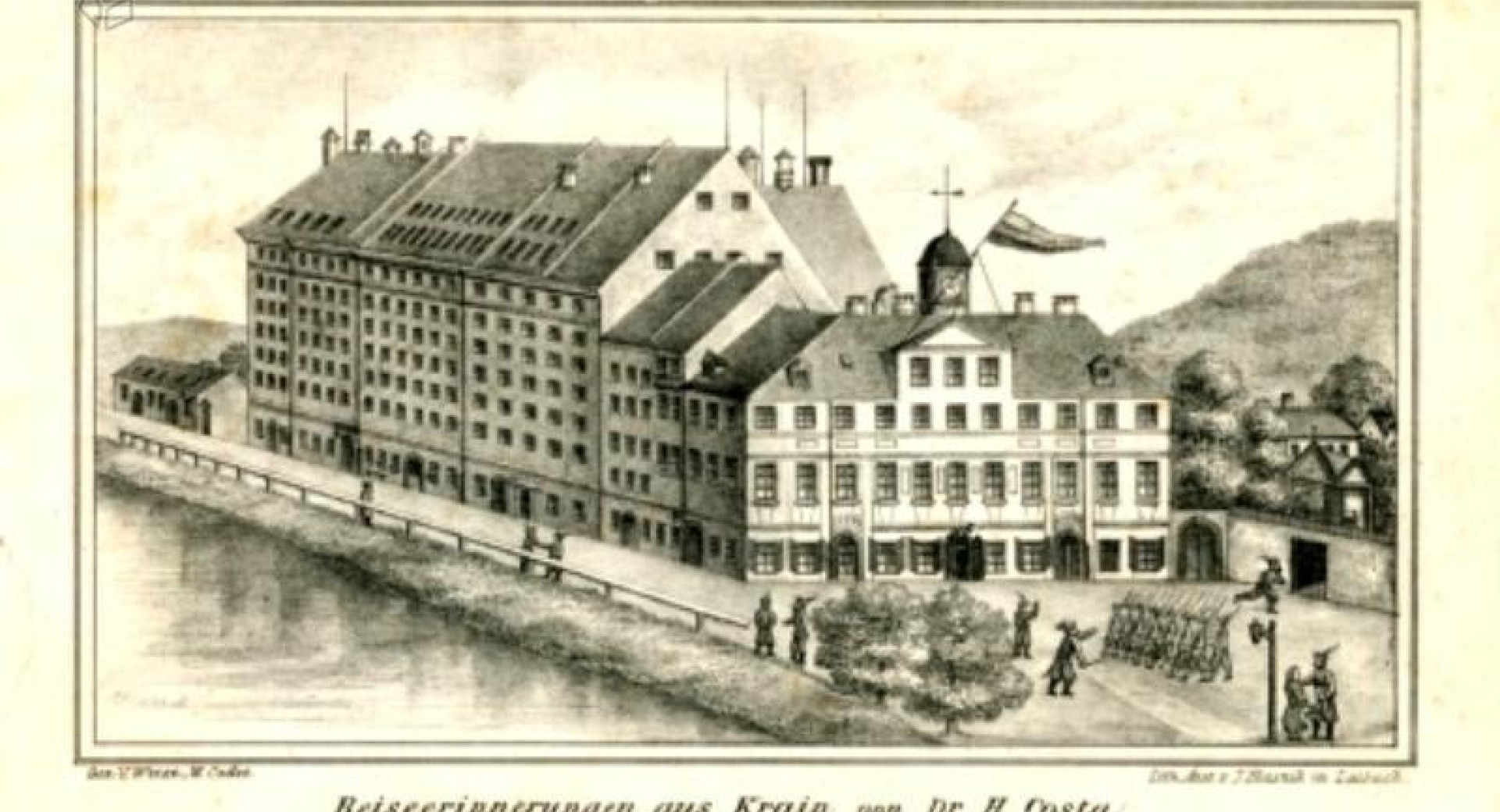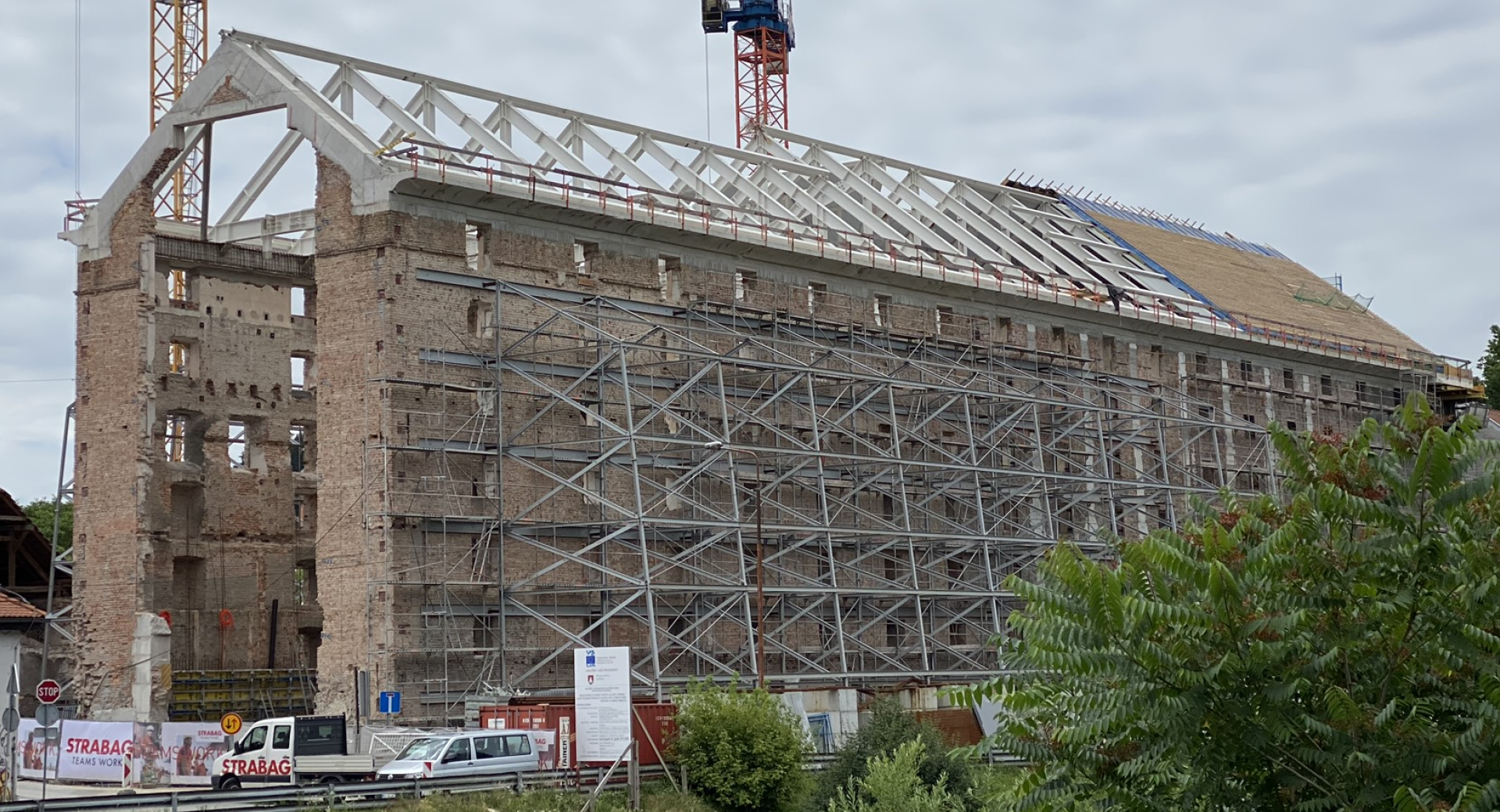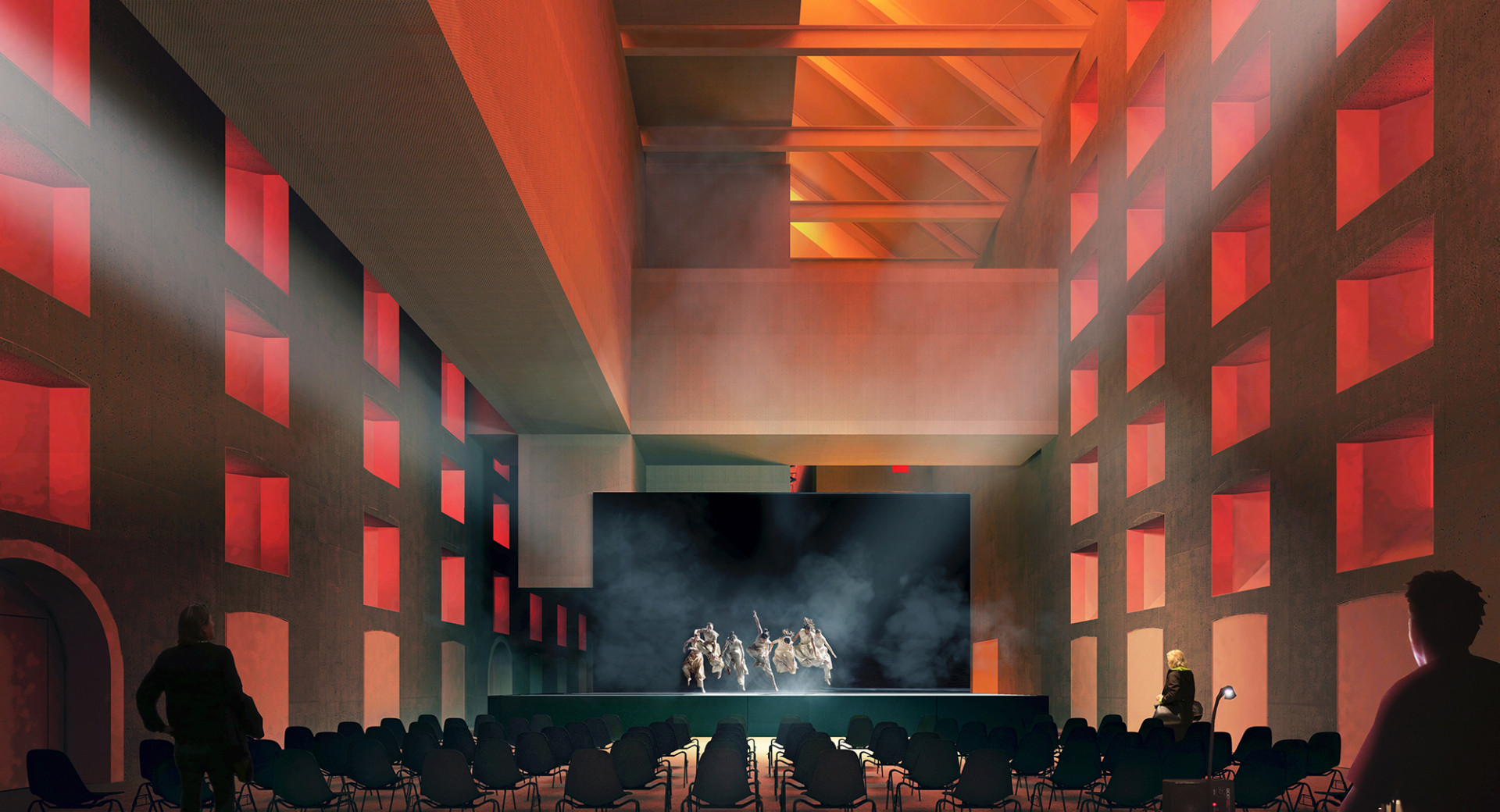Cukrarna - 19th century sugar factory turns into a special venue and a large gallery space
In the centre of Ljubljana, a complete renovation and refurbishment of the 19th century sugar factory has taken place.

History - from sugar to tobacco factory and army barracks
The Cukrarna is a building that was once considered one of the most important industrial plants in Slovenia from the first half of the 19th century. It first operated as a sugar refinery. In 1828, Rossmann & Pelican, two wholesalers from Trieste, applied for the factory permit and later decided to set it up in Ljubljana due to the proximity of the customs. In 1835, the first steam engine in the territory of today's Slovenia was installed in the factory, and a period of relative stability followed. In the years between 1841 to 1849, the new owners increased the factory's capacities and thus caused the biggest boom in the history of the Ljubljana sugar industry. The Cukrarna is still considered a very unique monument to the industrial capitalism.

Old postcard of Cukrarna from 1917.
On August 25, 1858, a human-caused fire destroyed the factory almost entirely: its warehouse, equipment, and most of the sugar supply were completely destroyed. Everything except the woodshed and the barn burned down. The factory also lost the tall chimneys that gave it the character of a typical industrial facility. The factory building was partially reopened but it never functioned as a sugar refinery again. From the 1864 to 1866, the building hosted soldiers who used its premises as apartments; between 1870 and 1872, a tobacco factory operated on its premises, but another fire brought the building's life on halt again. It was then used as military barracks between the 1873 and 1918. In the meantime, some of the Ljubljana's residents who lost their homes in the devastating 1895 earthquake, which destroyed one-tenth of the city's buildings, lived in Cukrarna for a while as well.

Cukrarna from the times it was used as military barracks.
Long period of slow decline
During the Second World War, the cellars of the factory served as shelters. After the building started to serve as a centre for socially disadvantaged people and became a temporary home for construction company workers. In the past, this building also housed the premises of the Ljubljana Public Lighting company, and the Puppet Theater workshops. In the early 1990s, the Cukrarna was emptied with the intention of renovating and changing it into a shopping center, but the plans never materialized.
Cukrarna is also thought of as a birthplace of the Slovene literary modernism as many impoverished young Slovene modernist writers and poets found shelter in it at the turn of the 20th century.
New beginnings - large gallery and special event venue
In late 2018, the Municipality of Ljubljana started, with financial support of the Slovenian Government and European Regional Developmental Fund, and in coperation with the Museums and Galleries of Ljubljana, the first real renovation of the building. With the revamping of this massive empty industrial building that will provide an eclectic space for standing receptions for up to 1,000 delegates, the city will get a new special venue and a gallery of over 2,500 square metres. It will be the biggest exhibition space suitable for more demanding Slovenian and foreign art exhibition projects, as well as for other events in the field of business events, culture, the arts and education.

The current renovation (outside).
Most importantly, it will strengthen the cooperation with important international partners aiming at the realisation of bigger joint projects, which, until now, was often impossible due to inadequate facilities. The Municipality also aims to expand the city centre towards the east and consequently acquire additional public space. The urban intervention will include the upgrade of the urban environment around the project structure itself.
Update: The new multipurpose cultural venue Cukrarna started operating in September 2021.

Cukrarna as the new special event venue.
